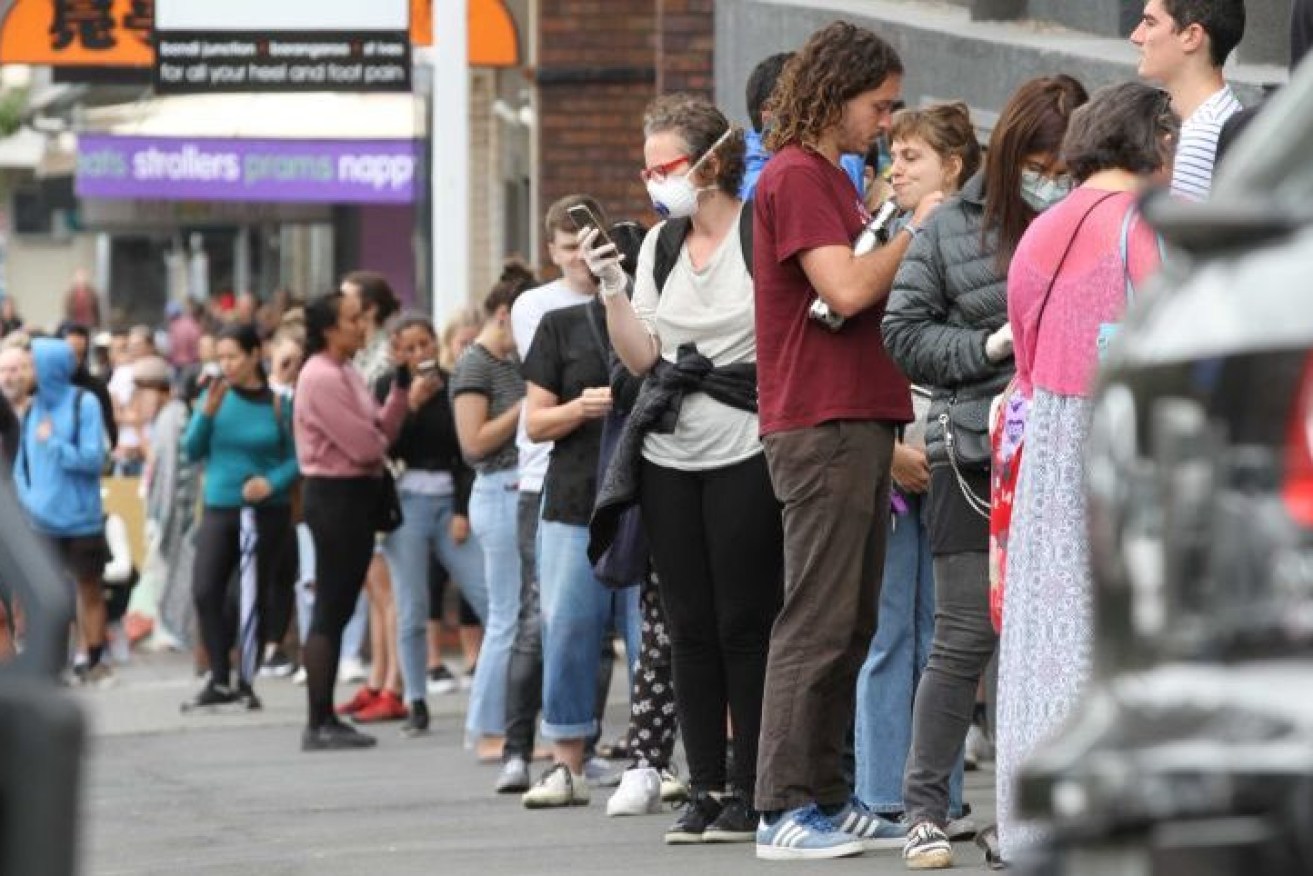JobKeeper changes are coming, and these businesses could lose it next

JobKeeper did save jobs, no doubt about it. But it also opened a treasure trove of taxpayer dollars to corporate pillagers. Photo: AAP
There’s a telling line in the rules surrounding the federal government’s $70 billion JobKeeper wage subsidy that indicates the Treasurer reserves the right to make changes to the scheme.
It states: “An entitlement to JobKeeper payment under this part may be cancelled, revoked, terminated, varied or made subject to conditions by or under later legislation.”
The scheme, which has helped about 3.5 million workers via a $1500 fortnightly wage subsidy paid to businesses, was meant to operate for six months to the end of September.
But it is being reviewed by Treasury, and the results will be made public on July 23, when the government will provide an economic and fiscal update.
After the government announced that payments to workers in the childcare sector would end this month, Treasurer Josh Frydenberg has not ruled out that other businesses could face the same fate.
We will be looking to see how to strengthen and improve that program,” Mr Frydenberg told reporters on Tuesday.
ABC News spoke to economists who said it’s likely that a number of businesses would also see payments cut off early, while others could see extensions beyond September.
Treasury’s review comes as Australia’s economy reopens sooner than expected, after the rate of coronavirus infections and deaths in Australia fell short of initial projections.
There have been 102 coronavirus deaths in Australia to date, and the rate of active cases has been on the decline, allowing individuals and businesses in different states to steadily return to work.
Treasury secretary Steven Kennedy on Tuesday took responsibility for the $60 billion overestimation of the Morrison government’s JobKeeper scheme – the initial cost was estimated to be $130 billion.
He also told a Senate committee that, early on, it had been hard to gauge what measures were needed to contain the spread of the virus domestically.
But since the economy had done better than expected, Treasury now predicted unemployment would “be in the order” of 8 per cent.
“We have been steadily revising down our expectations of how high the unemployment rate will rise because of the fact that the health scenario has continued to improve,” Dr Kennedy told the committee.

Treasurer Josh Frydenberg has indicated there will be further changes to JobKeeper. Photo: ABC News
Businesses could self-report to receive JobKeeper
Steven Hamilton is a tax economist and visiting fellow at the Tax and Transfer Policy Institute at the Australian National University.
He told ABC News the JobKeeper scheme should have never been in place for six months.
“It is very difficult to see the federal government paying all this money all the way through to September,” Dr Hamilton said.
“It seems to be a very large cost that’s no longer achieving what it was supposed to achieve.”
He said there will be a way in which the government scales back the payment for other firms before September.
Dr Hamilton suggests one way to do that would be to put the onus on businesses to self-report to the Australian Taxation Office at the end of every month how much money they made in the past fortnight, and how much money they expect to make in the next month.
He said businesses already report this information, but it could now be used to track whether they should or shouldn’t continue to receive JobKeeper payments.
Dr Hamilton said businesses would need to declare, in good faith, if they expect revenue to fall 30 per cent for a month.
“It is very politically palatable as it [ending the scheme for some] only takes money away from firms that don’t need it,” he said.
“There would actually be a large number of businesses now that are being overcompensated – they only had one bad month but got $1500 per fortnight per employee for six months.”
It makes sense to take money away from firms that are massively profiteering.”
He said if a firm was wrong about the next month’s revenue, they would self-report the following month that they had actually made a profit, and then see their payment cut off.
This would lessen the likelihood that people game the system, and would be easy for the ATO to track.

Some businesses are able to return to work as coronavirus-related social distancing restrictions ease. Photo: Unsplash
Call for hospitality, tourism firms to have extension
The childcare sector was the first to see the JobKeeper payment come to an end sooner than anticipated.
On Monday, federal Education Minister Dan Tehan announced the pay would end from July 20 for employees of childcare providers.
Instead of JobKeeper, the government will allocate $708 million to pay childcare services a transition payment of 25 per cent of their fee revenue from July 13 until September 27.
Childcare providers will need to meet certain conditions to qualify for the transition payment.
Grattan Institute economist Danielle Wood said she was concerned about changes made to the wage subsidy for the childcare sector.
The reintroduction of fees will be hard for parents that have lost their jobs … and this could impact the viability of some centres,” Ms Wood said.
However, she agreed that the federal government did need to broadly reassess the payment and cut it off before September for firms that had seen revenue recover.

Grattan Institute economist Danielle Wood says JobKeeper should be extended beyond September for firms that need it.
She said if it was deemed that a firm had recovered, they should be given one month’s notice.
“But you would do it on [a] firm-by-firm basis, because there will be very different stories within sectors based on the states they are in,” she said, noting some states had eased restrictions faster and more strongly than others.
Ms Wood also argued that hospitality and tourism businesses that had not seen their business return to normal should receive the payment beyond September.
Dr Hamilton agreed some businesses would still require JobKeeper since there were still restrictions limiting how many people can be inside a business premise such as a restaurant, so they would be operating at reduced capacity.
And the big problem for many businesses was that international borders were still closed, and would likely remain so until next year, meaning they would have to continue to rely on JobKeeper to stay afloat.
“We need stimulus as the economy is not going to get back to normal immediately and pulling too much support out too quickly could be quite damaging,” Dr Hamilton said.








